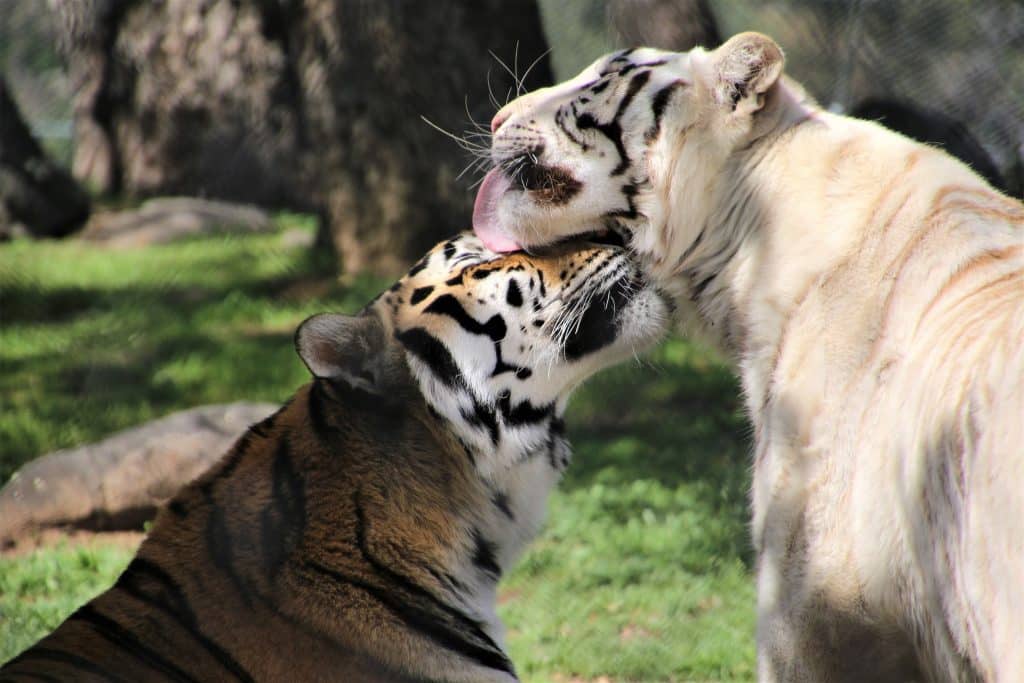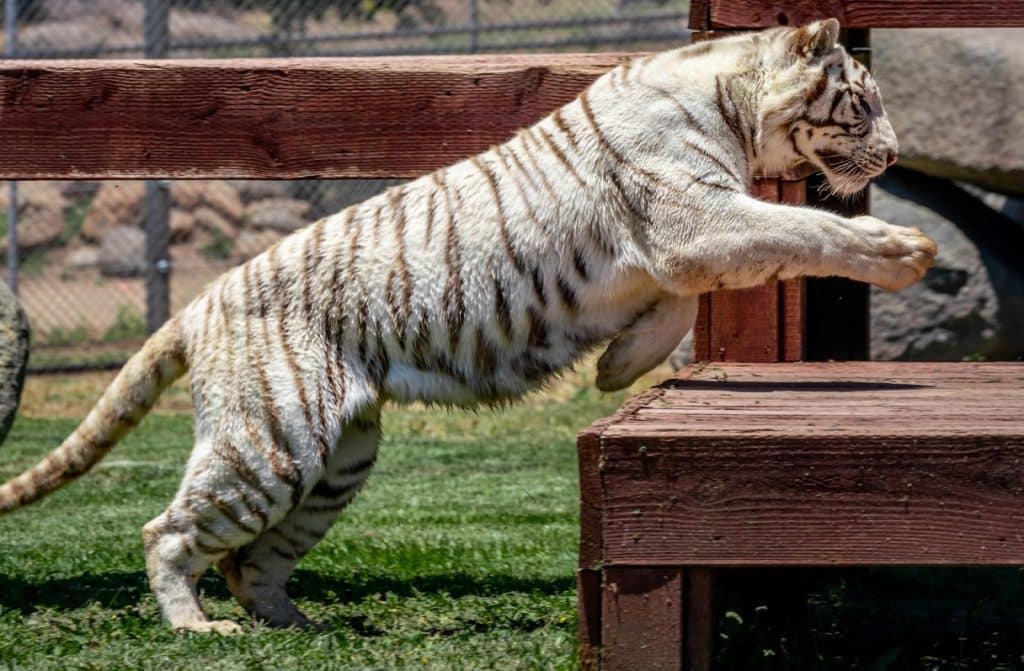
Tigers have a very powerful roar. Their roar is so loud that it can be heard from miles away. Interestingly, these big cats can also produce low-pitched infrasonic sounds that are below the human hearing range. So, humans can't hear the sound, but can feel it. It’s the killer blend of ear-splitting roar and infrasound that can cause temporary paralysis to other animals, including humans.
Infrasound travels long distances, and tigers use it to hunt and communicate. It can also penetrate solid objects like bones, which is why people report feeling the tiger roar. Low-frequency sound has been shown to cause drowsiness, vibration of internal organs, chills, and even depression. Some report the feeling of a tiger's roar as a "ghostly" experience. Either way, this penetrating sound is just one weapon in the tiger's sonic arsenal.
In this article, we'll take a look at the different sounds tigers make and the reason behind them. But first, let's have a look at the state of tigers today.

Tigers have been around for millions of years. However, they're now considered an endangered species. The relentless specter of poaching for body parts, coupled with habitat loss, has pushed these magnificent creatures towards extinction. And the changing climate throws another wrench into the mix of the multitude of challenges and threats facing tigers today.
According to recent estimates, the population of wild tigers stands at just around 5,500, a mere shadow of the estimated 100,000 that roamed freely a century ago. These are mostly continental tigers that include Malayan, Bengal, Indochinese, and Siberian tigers. But the Javan, Bali, and Caspian tiger species are now extinct, while the South China tiger is believed to be functionally extinct.
In the face of ever-present challenges that threaten the very existence of tigers, Lions Tigers & Bears (LTB) stands as a safe haven for these endangered species. Our sanctuary offers a safe, enriching, and supportive environment for tigers, contributing significantly to the conservation efforts aimed at preserving this majestic species.

Tigers communicate through a diverse range of vocalizations. At LTB, we understand these sounds and use them to gain valuable insights into the emotional and physical well-being of the tigers under our care. Here's a look at the roars and sounds that tigers use to communicate:
Tigers moan to express contentment and relaxation. Similar to how humans might sigh when feeling at ease, tigers emit moaning sounds during moments of comfort and satisfaction. These gentle and soothing vocalizations are often heard when a tiger is at rest, enjoying a comfortable environment, or interacting with its cubs.
Moaning also serves as a means of creating a calm and secure atmosphere between the mother and cubs. The soft moans communicate a sense of reassurance and connection, promoting a positive and nurturing environment within the tiger family.
Tigers chuff as a friendly and non-threatening form of communication. Chuffing is a soft, puffing sound that tigers use to express friendliness and camaraderie, particularly in social interactions. It's commonly observed in various contexts, such as between tiger cubs and the mother or among adult tigers in close proximity to one another.
Chuffing is a great way for tigers to establish and maintain positive social bonds. This vocalization helps strengthen connections within the tiger community and fosters a sense of companionship.
Tigers growl to express discomfort or irritation or establish boundaries. Growling is a more assertive vocalization compared to moaning or chuffing and serves as a warning signal to other tigers or animals in the vicinity.
When a tiger growls, it's essentially communicating a message of caution or asserting a need for personal space. This vocalization is often heard during confrontations or situations where a tiger feels threatened. It acts as a form of communication to deter potential threats and avoid unnecessary conflicts.
Roaring is a distinctive and loud vocalization that carries over long distances, making it an effective means for tigers to convey specific messages. Tigers roar for various reasons, including:

Tigers are territorial, and roaring is a way for them to assert their presence and mark their territory. The loud and distinctive roar acts as an auditory boundary, signaling to other tigers that the home range is already claimed. This helps prevent unnecessary conflicts and establishes a clear delineation of space.
Tigers are solitary, and their social structure is connected through scent marks, visual signs, and vocalization. During the mating season, a male tiger roars to attract potential mates. The deep and powerful roar is a display of strength and dominance, signaling to potential mates about their presence and fitness for reproduction. Female tigers, in turn, may respond with calls to indicate their receptivity. Tigers only interact briefly for mating reasons or to share their kill.
Tigers are generally solitary creatures, but they use sounds to communicate with other tigers in the area. Roaring is a social behavior that conveys information about the tiger's presence, intentions, and emotional state. It plays a vital part in the complex social dynamics of these big cats.

Apart from vocalizations, tigers exhibit various behaviors that define their role as apex predator. Let's explore some more interesting facts about tigers:
Join us in our efforts to rescue and conserve these majestic creatures. Whether through donations, advocacy, or spreading awareness, your involvement makes a tangible impact to improve the lives of these amazingly complex creatures.


Ph: 619.659.8078
Fx: 619.659.8841
[email protected]
24402 Martin Way, Alpine, CA 91901
Subscribe for our newsletter & get the latest news, exclusive deals, and to hear amazing stories of our rescued animals!